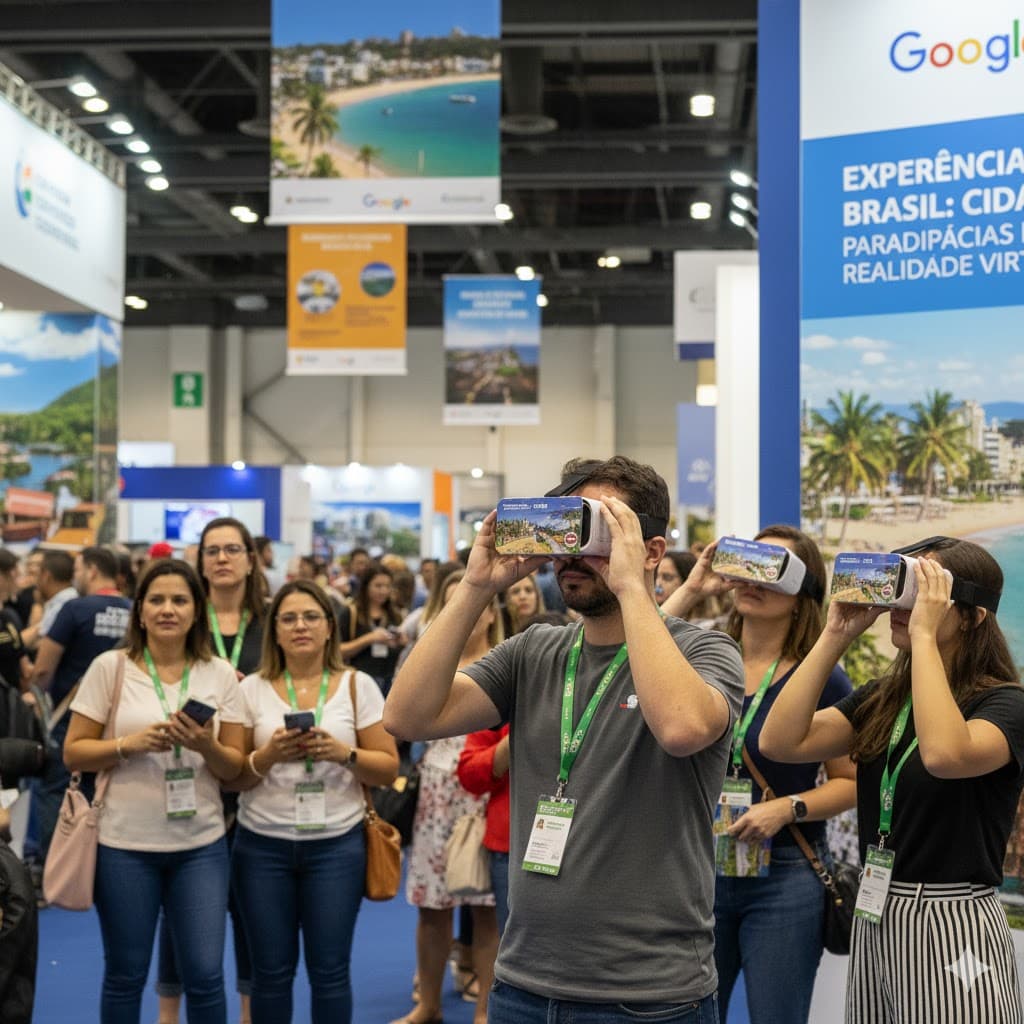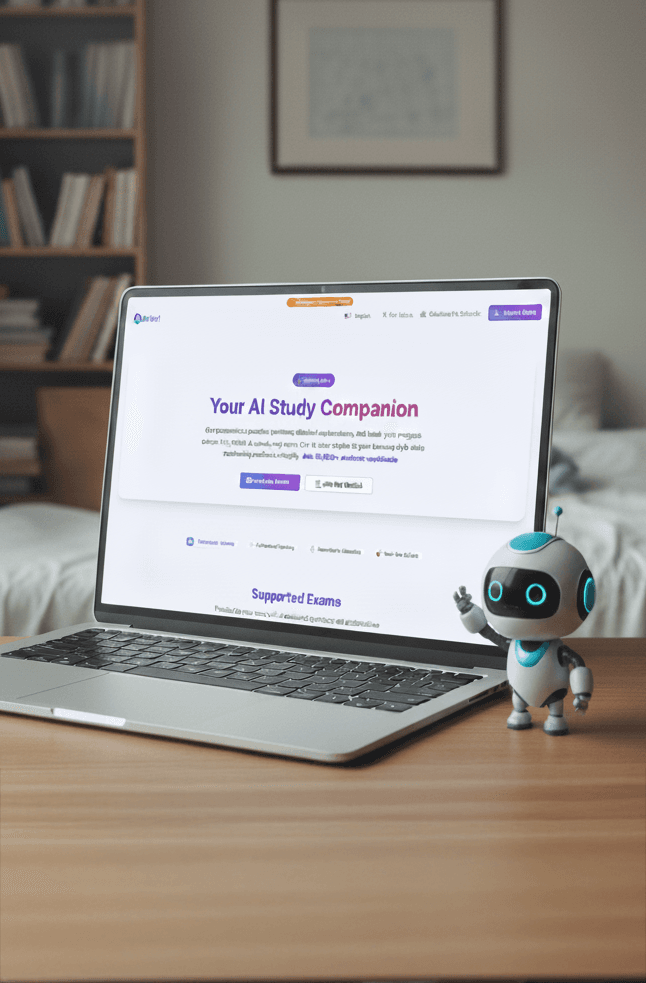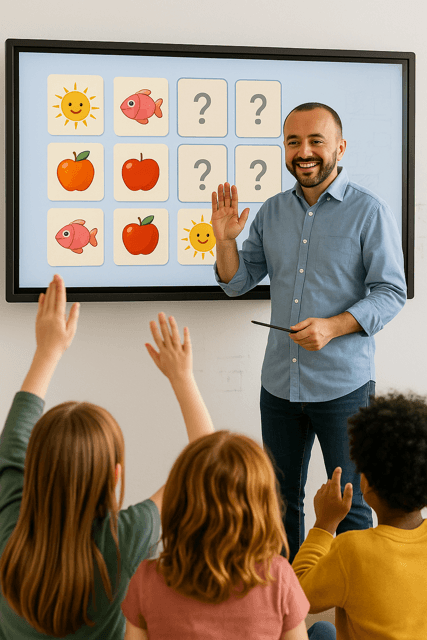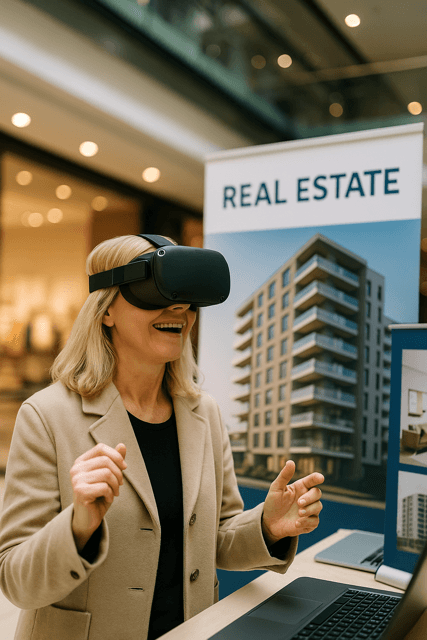Overview
Go There was a pioneering VR tourism initiative designed to help small Brazilian cities showcase their cultural and environmental assets at national and international expos—without the cost of physical booths or logistics. As a solo founder in 2015, when VR was still emerging technology, I built an end-to-end solution combining immersive 360º VR experiences with accessible web-based virtual tours, ultimately serving over 25 businesses across 4 cities.
The Problem
Small cities in Brazil's Northeast region possess rich tourism potential but lack the resources to compete at major expos and trade shows. Traditional exhibition stands require significant investment in physical infrastructure, travel, and staffing—costs that tourism departments and local businesses simply cannot afford.
Initial Hypothesis: A portable VR solution (phone + Google Cardboard) could democratize tourism promotion, allowing city representatives to carry immersive experiences in their pocket.
Constraints & Context
Technical Challenges
- Emerging Technology: In 2015, VR was nascent—scarce documentation, limited developer community, and widespread skepticism about its viability
- Solo Development: As a designer with game development knowledge but no formal programming background, I self-taught Unity 3D through community forums and developer friends
- Hardware Limitations: Google Cardboard's single-button input (a side magnet) created significant UX constraints
- Motion Sickness: Early testing revealed 30% of users experienced discomfort with moving 360º video
Business Constraints
- Zero Budget: Self-funded project requiring me to personally capture all 360º content (camera, drone, photography)
- Market Education: Potential clients couldn't visualize the value of a technology they'd never experienced
- Government Sales Cycles: Bureaucratic processes and skepticism toward a young solo founder created insurmountable relationship barriers
Goals & Success Criteria
Initial Goals (Government B2B)
- Secure pilot partnerships with 4 cities: Campina Grande, João Pessoa, Natal, Recife
- Generate demos at 3+ tourism expos
- Validate VR as a cost-effective alternative to physical exhibition stands
Pivoted Goals (Business B2B)
- Convert local businesses (hotels, restaurants, event venues) into paying clients
- Deliver 360º content that could be embedded on business websites and hosted free on YouTube/Google Maps
- Achieve product-market fit by offering immediate utility (web tours) rather than speculative technology (VR)
My Role & Collaboration
Founder, Product Designer, Developer, Photographer
I wore every hat: product strategy, Unity 3D development, 360º photography/videography, drone operation, UX design, sales, and customer delivery. I collaborated with:
- Developer friends for technical troubleshooting and code reviews when I hit Unity roadblocks
- Technology park community (6–7 companies, including a game studio) for ad-hoc learning and problem-solving
- Startup mentorship program that challenged my initial government-focused business model and catalyzed the pivot to direct B2B sales
Process
1. Research & Initial Validation (Government Discovery)
I conducted outreach to tourism departments, hotels, and restaurants across 4 target cities. Key findings:
- Tourism agents: Loved the concept but lacked budget allocation for innovation
- Government: Expressed skepticism due to the emerging nature of VR and my lack of institutional credibility as a solo founder
- Businesses: Interested in the idea but hesitant about VR hardware requirements
Insight: The innovation wasn't the barrier—it was the delivery model. Businesses needed immediate, practical value they could use today, not speculative technology requiring user education.
2. Pivoting the Business Model
During a mentorship program, I reframed the problem:
- Old Model: Sell VR experiences to governments for expo use
- New Model: Sell 360º photography services to local businesses, delivering web-embeddable virtual tours + YouTube/Google Maps hosting
This pivot unlocked faster sales cycles, direct decision-making, and recurring revenue opportunities.
3. Technical Prototyping & UX Innovation
Challenge 1: Motion Sickness
Problem: 30% of early testers experienced nausea when viewing moving 360º video while stationary.
Solution: I replaced continuous video navigation with teleportation mechanics—users selected fixed viewpoints and "jumped" between them. This reduced motion sickness to 3%.
Challenge 2: Google Cardboard's Limited Input
Problem: Users constantly forgot about the side magnet button, breaking immersion.
Solution: I designed a gaze-based interaction system—users focused on a "link marker" for 3 seconds to trigger navigation. This eliminated the need for physical input and worked universally across all users.
Challenge 3: Dual Platform Strategy
Problem: VR required hardware and user education; businesses needed immediate web utility.
Solution: I created a complementary web experience mirroring Google Maps Street View navigation. This allowed businesses to embed tours directly on their websites with zero learning curve for end users.
Key Decisions
-
Pivoting from VR-first to 360º-first: Recognized that the core value wasn't the VR headset—it was the immersive content. By decoupling the experience from hardware, I made the product immediately accessible.
-
Teleportation over continuous movement: Prioritized user comfort over cinematic realism, reducing motion sickness by 90% and making the experience viable for mass audiences.
-
Gaze-based navigation: Solved Google Cardboard's input limitations by designing an interaction pattern that felt intuitive and eliminated hardware dependencies.
-
Self-service distribution (YouTube + Google Maps): Businesses gained free hosting and SEO benefits, reducing friction and increasing perceived value without ongoing cost.
Final Solution
VR Experience (Unity 3D)
- Immersive 360º photo-based exploration of cities, hotels, and venues
- Teleportation navigation to prevent motion sickness
- Gaze-triggered interactions optimized for Google Cardboard
- Portable demo setup: smartphone + cardboard headsets
Web Experience
- Google Maps-style virtual tours embeddable on business websites
- YouTube 360º video hosting for social sharing and SEO
- Zero learning curve for end users familiar with Street View
Impact & Outcomes
Quantitative Results
- 25+ businesses across 4 cities (Campina Grande, João Pessoa, Aracaju) purchased 360º photography services
- 22 virtual tours delivered: 12 in Campina Grande, 3 in João Pessoa, 7 in Aracaju (hotels, restaurants, event venues)
- 3 live demos at tourism and tech events, generating organic interest and word-of-mouth referrals
- Media recognition: Featured on a major Brazilian television network, validating the innovation and generating brand awareness
Qualitative Feedback
- Users reported feeling "truly present" in the space—some claimed they could "almost feel the air"
- Event demos created "crowd magnet" effect: one person wearing the headset drew groups of curious onlookers, amplifying exposure
- Businesses valued the dual utility: VR for experiential marketing + web tours for practical website use
Business Learnings
- Innovation timing matters: VR was too early for mainstream adoption in 2015 Brazil. The technology was ahead of market readiness.
- Relationship capital is currency: Without existing networks into government procurement, sales cycles were prohibitively long.
- Pivot or perish: The willingness to shift from B2G to B2B unlocked revenue and validated the core technology in a different context.
What I Learned
Product & Strategy
- Innovation in emerging markets requires pragmatism: In non-innovative economies like Brazil, businesses need free pilots and year-long validation before committing—a reality that made bootstrapped VR financially unsustainable.
- Decoupling value from hardware: The most successful product iteration wasn't the VR experience—it was the 360º content delivered through familiar, accessible platforms (YouTube, Google Maps).
- Know when to stop: Recognizing when a market isn't ready is as valuable as building the product itself. This project taught me to validate demand before over-investing in technical execution.
Technical Growth
- Self-taught Unity 3D development: Built a functional VR app from scratch by leveraging community resources, developer friends, and relentless problem-solving—proving I can learn any tool necessary to bring ideas to life.
- Human-centered VR design: Discovered that motion sickness and input accessibility are non-negotiable UX constraints in VR, informing my approach to all future immersive experiences.
- Wearing many hats: Managed product strategy, development, photography, sales, and delivery solo—a skill set that remains foundational to my ability to lead cross-functional teams today.
Personal Insight
Go There didn't become a commercial success, but it was a transformative learning experience. It taught me how to adapt quickly, validate assumptions, and recognize when to pivot or walk away—skills I carry into every product I design today.
Suggested Visuals
- Hero Image: Photo of someone wearing Google Cardboard at a demo event, surrounded by curious onlookers
- Problem Visualization: Side-by-side comparison of traditional expo booth costs vs. Go There's portable VR setup
- User Journey Map: Government sales cycle vs. business sales cycle (showing the pivot rationale)
- UX Solution Diagrams:
- Motion sickness reduction: moving video vs. teleportation navigation
- Gaze-based interaction: how the 3-second focus trigger worked
- Platform Comparison: VR experience (Unity) vs. web experience (Google Maps-style interface)
- Impact Metrics Dashboard: 25 businesses, 4 cities, 22 tours delivered
- Media Feature Screenshot: TV broadcast or news article about Go There
- Before/After: Example hotel space—traditional photos vs. 360º virtual tour
This case study demonstrates strategic pivoting, technical innovation in emerging technology, and the ability to extract valuable learnings from projects that don't achieve commercial scale—essential traits for senior product designers navigating ambiguity and rapid change.



